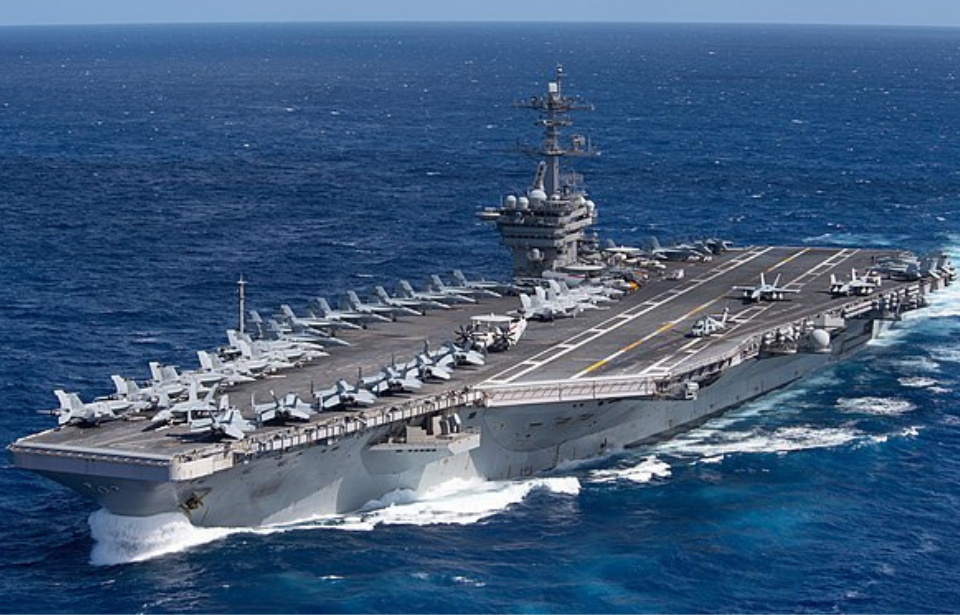The USS Theodore Roosevelt (CVN-71) was the fourth aircraft carrier commissioned as part of the nuclear-powered Nimitz-class. Known by her call sign “Rough Rider” – the nickname given to US President Theodore “Teddy” Roosevelt‘s cavalrymen during the Spanish-American War – she’s participated in a number of combat missions over the course of her service career, in dedication to her duty to maintain open sea lanes to foster communications and trade, as well as showcase America’s air superiority.
Delays upon delays
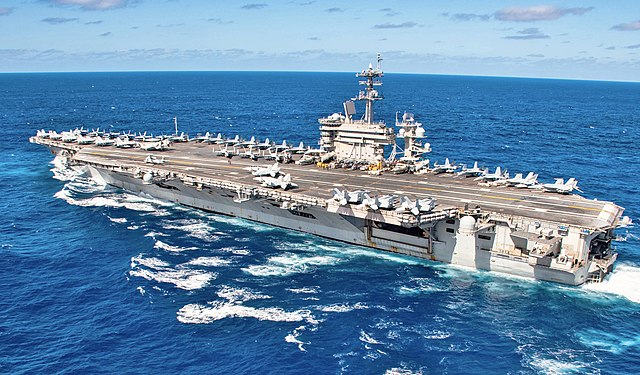
Despite being on the books for a while, the USS Theodore Roosevelt almost never came to fruition, as then-President Gerald Ford canceled the project in favor of two conventional-powered aircraft carriers. These medium-sized vessels were expected to operate vertical and/or short take-off and landing (V/STOL) aircraft.
While these ships were never built, the former continued to experience delays under Jimmy Carter‘s Administration, with the president vetoing the Department of Defense’s authorization bill for the 1979 Fiscal Year. However, the Iran Hostage Crisis, as well as increased naval deployments to the Indian Ocean, prompted him to make an about-face, with Theodore Roosevelt being approved the following year.
USS Theodore Roosevelt (CVN-71) specs
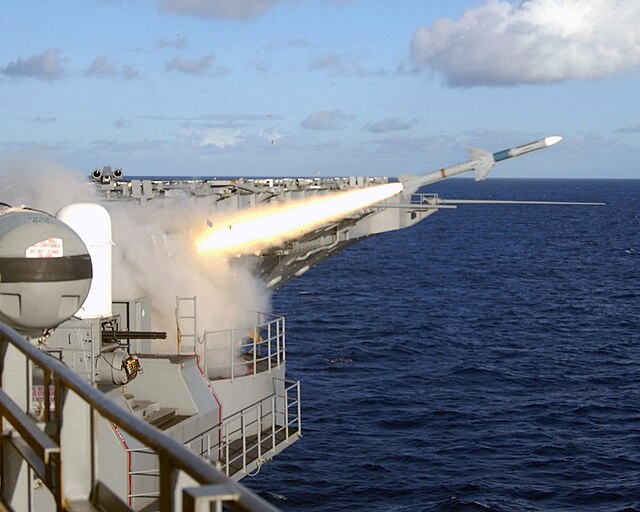
The USS Theodore Roosevelt was built differently than previous Nimitz-class carriers. Known as “modular construction,” this method cut 16 months off of the time it took to prepare the vessel for service and it’s been used on every aircraft carrier since.
Theodore Roosevelt is powered by two Westinghouse A4W nuclear reactors and four steam turbines that drive four shafts. This allows the vessel to travel an unlimited range at more than 35 MPH. The only thing that could force the carrier to return to base, other than orders, would be a need to replenish the crew’s supplies.
Along with being equipped with an array of radar and guidance systems, Theodore Roosevelt features SLQ-25A Nixie Torpedo countermeasures and an AN/SLQ-32A(V)4 countermeasures suite, along with 63.5 mm of Kevlar armor around vital areas. In terms of armament, the carrier is equipped with two Phalanx Close-In Weapon Systems (CIWS) Gatling guns, two RIM-7 Sea Sparrows and two RIM-116 Rolling Airframe Missiles.
All of this allows the vessel’s several-thousand-size crew to live comfortably alongside its 90 fixed-wing aircraft and helicopters.
Seeing action during the Gulf War
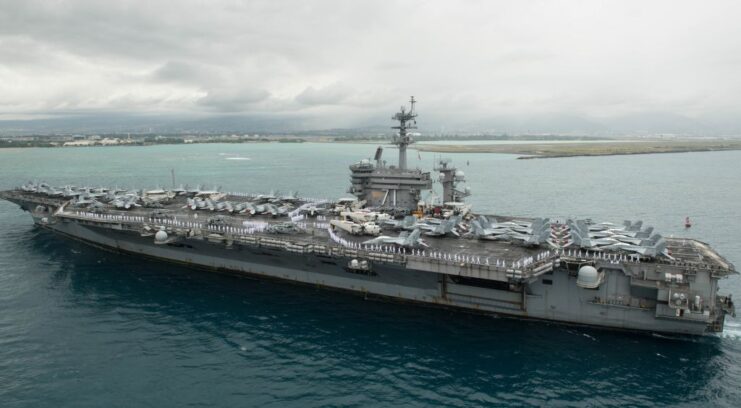
Just over two years after her commission, in December 1988, the USS Theodore Roosevelt embarked on her maiden deployment with Carrier Air Wing Eight (CVW-8), during which she patrolled the Mediterranean Sea. Two years after that, she was sent to the Persian Gulf as part of Operation Desert Shield, arriving in time to participate in Operation Desert Storm.
Over the course of Desert Storm, Theodore Roosevelt‘s aircraft flew 4,200 sorties, more than any other aircraft carrier, and dropped over 4,800,000 pounds of ordnance on enemy targets. This was followed by her involvement in Operation Provide Comfort, in response to Iraqi actions against Kurdish refugees in the aftermath of the Gulf War.
Following the conflict and additional deployments, the carrier was sent to Bosnia as part of Operation Deny Flight, after which she was ordered to the Red Sea to enforce a no-fly zone over Iraq as part of Operation Southern Watch. Over the next few years, she and her crew continued to operate on and off in the region, during which she would also continue watching over Bosnia.
Around this time, Theodore Roosevelt was involved in an incident with the USS Leyte Gulf (CG-55), a Ticonderoga-class guided-missile cruiser. While conducting operations off the coast of North Carolina, she backed up without prior warning, colliding with the latter’s bow, causing a combined $9 million in damage.
Global War on Terrorism and the USS Theodore Roosevelt (CVN-71)
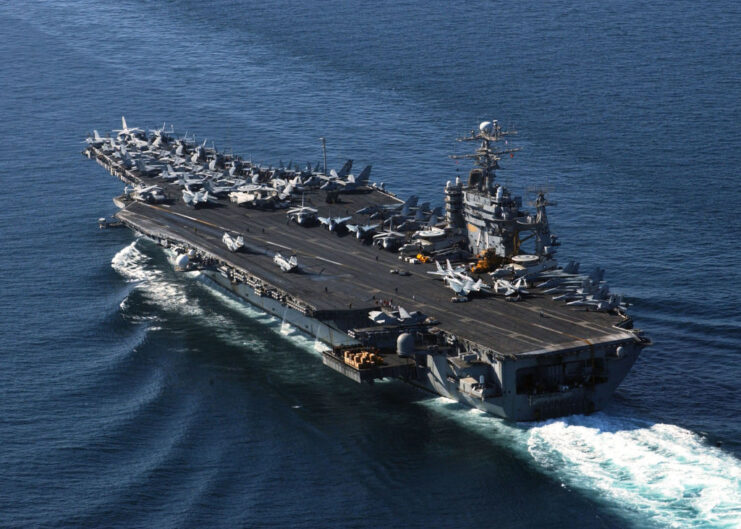
Following the September 11th Attacks, the USS Theodore Roosevelt was deployed to the North Arabian Sea with Carrier Air Wing One (CVW-1), and the USS Enterprise (CVN-65) and Carl Vinson (CVN-70) as part of the opening stages of Operation Enduring Freedom. In February 2002, she became the vessel to have been deployed for the longest time since the Second World War, with her at sea for 160 consecutive days.
In March 2003, as part of Operation Iraqi Freedom, the aircraft carrier teamed up with the USS Harry S. Truman (CVN-75) to conduct air strikes against Iraq, which, two years later, was followed by a six-month deployment to the Persian Gulf in support of the military operation. This was notable for being the last time the Grumman F-14 Tomcat saw combat before its retirement.
More from us: USS Kidd (DDG-100): The Only US Navy Warship That’s Allowed to Fly the Jolly Roger
Still in service, the last major mission undertaken by Theodore Roosevelt occurred as part of Operation Inherent Resolve, which saw the vessel’s aircraft conduct 1,800 sorties against militants in Syria and Iraq.
